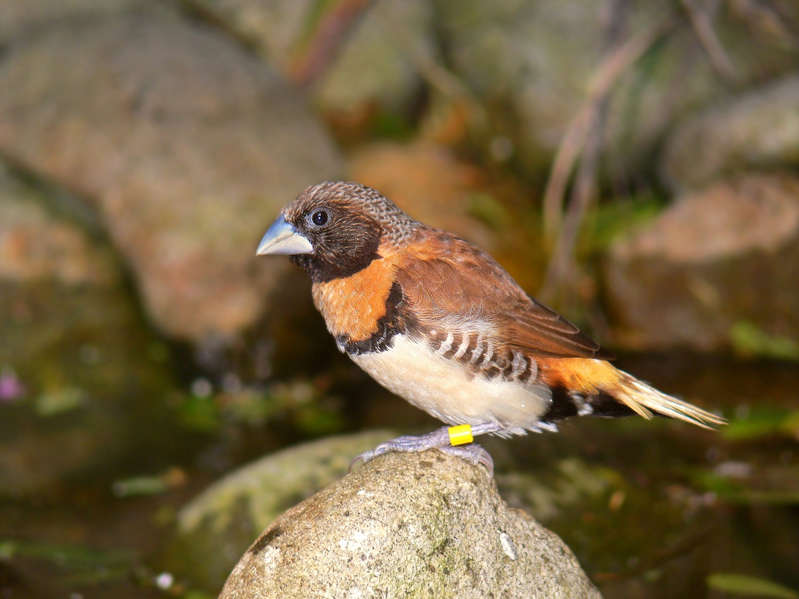
Chestnut finch
Skoltech researchers and their colleagues have shown that in species that are distantly related, adaptation to similar external conditions is most likely achieved using different positions of the genome and is not associated with convergent molecular evolution. Scientists have investigated the repeated adaptations of the mitochondria of wild birds to altitude, migration, diving, wintering and flight. The study showed that repeated substitutions in the genome are more a coincidence than a result of adaptation, which confirms the hypothesis that in species far from each other, the paths of evolution of similar traits are completely different. The results of the work are presented in an article published in the journal Genome Biology and Evolution.
In order to survive in unusual conditions, such as oxygen starvation, characteristic of high altitudes, or the acceleration of metabolism at extreme temperatures, the body is forced to adapt. If different species find themselves in the same environmental conditions, each of them will adapt independently, and adaptation can occur through the same substitutions in identical genomic positions. This process is called single-site molecular convergence.
“Convergent evolution is one of the most interesting questions in evolutionary biology. From a practical point of view, it helps to find specific genomic positions associated with adaptation, and from a theoretical point of view, it allows you to understand to what extent evolution is capable of repeating itself. However, as you know, detecting single-position mutations caused by convergent adaptation is very difficult, especially in phylogenetically distant species, so scientists are still debating whether this is possible in principle, ”says Skoltech graduate student Valentina Burskaya.
Burskaya, Professor Georgy Bazykin and their colleagues have prepared an extensive dataset on 415 species, in which similar characters appear dozens of times on the phylogenetic tree. With the help of these data, scientists were able to gain a deeper understanding of the problem of adaptation: earlier attempts to detect convergent single nucleotide mutations in phylogenetically distant species were based on the use of only a few cases of independent adaptation to similar environmental conditions.
“For our study, we chose the mitochondrial genome, since it is small, which means it has already been sequenced for many species, but it also contains extremely important genes. Mitochondrial genes are responsible for responding to hypoxia and regulating metabolism. It was these circumstances that we were guided by when choosing the phenotypic traits of interest to us, ”says Valentina Burskaya.
To study adaptation to hypoxia, scientists have used alpine and diving birds. To study the adaptations affecting the change in the metabolic rate, four more groups of species were selected: wintering in high latitudes, with outstanding flight abilities, adapted to seasonal migrations, and flightless. Using phylogenetic analysis techniques, the researchers placed all species on a phylogenetic tree and then calculated synchronous changes in the phenotype and genotype of different species. Ultimately, scientists were able to show that in most cases, convergence can be explained not by adaptation, but by chance coincidence.
This work is ideologically close to the recent attempt by scientists to find cases of one-position convergence in bats and marine mammals, due to their adaptation to echolocation. Its results confirm that the evolutionary landscape of species from different orders differs too much to speak of one-position adaptive convergence. The study was carried out with the participation of specialists from Moscow State University. M.V. Lomonosov, Institute for Information Transmission Problems. A.A. Kharkevich RAS and Hong Kong University of Science and Technology.
Read also:
DMSO prevents crystals from blocking oil and gas pipelines
Researchers show how permafrost releases methane in the warming Arctic
Nobel laureate in chemistry Eiichi Negishi dies
Russian scientists investigated the safety of hydrogen in a car
Developed and launched a global naming system for genetic variants SARS-CoV-2

